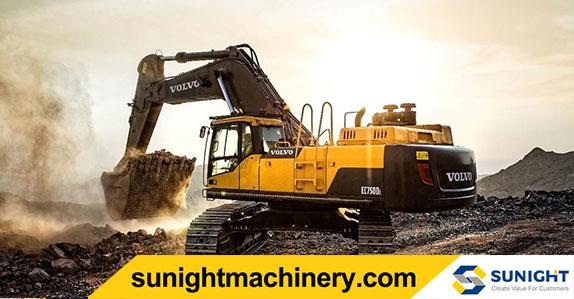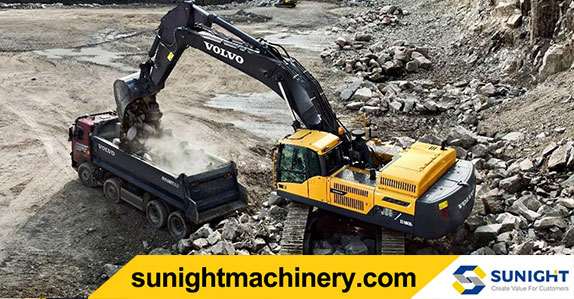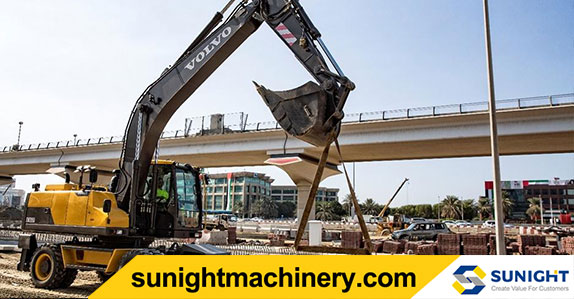Excavators are one of the most essential heavy equipment types of machinery used in most of the construction sites. They are useful in an array of activities such as hauling, breaking ground, lifting heavy materials, digging trenches, and much more. With such a wide variety of functions, it is only logical to have different work tools and attachments on excavators that can help you in achieving your goal. While the most standard work tool attachment on the excavator is the bucket, others include hammers, augers, thumbs, and couplers among others.
Further, with the different types of activities they perform, excavators not only come in different forms but different sizes as well. For example, the mini excavators that are lightweight and much smaller may perform lighter duties as they can quickly lift and transport materials in construction sites. Besides, the advanced technology on the hydraulic systems has seen some of the smaller excavators outmatch the larger pieces of equipment. It is, therefore, important to know the capabilities of the different types of excavators if intending to acquire one of the heavy equipment for sale.
Excavators are heavy construction equipment consisting of a boom, arm, bucket, and cab on a rotating superstructure atop an undercarriage with tracks or wheels. These machines are used mainly for digging purposes as well as various lifting and carrying tasks in various applications. Together with special tools such as hydraulic breakers, cutters, shears, grapples, couplers, etc. at the end of the various boom and arm configurations, excavators can complete a wider range of jobs. They vary in size depending on what you’re using them for and what you're aiming for, such as productivity, fuel efficiency, and multi-functional purposes. Each size has its own purpose, and some are highly specialized.
The wheeled excavators run on wheels where they are useful when excavating and loading materials. They are best suited for ground operations and may not be suitable for sloped or hilly landscape due to the low grip of wheels on the ground.
Also known as compact excavators, crawler excavating types of equipment are heavy-duty machinery that is mainly used for mining. They contain high horsepower that helps in lifting heavy materials and debris where this is achieved by the use of hydraulic power systems. The crawler excavators are best suited for landscaping and grading of sloppy areas.
A standard excavator consists of a stick, boom, and a bucket that is attached to its front. The heavy equipment machinery can rotate up to 360 degrees, a factor that can allow it to move soil or other debris while remaining stationary. It has two parallel tracks that provide low ground pressure, hence suited for sloppy or hilly terrain. The machinery is available in different sizes where it is mainly useful in landscaping, forestry, construction, farming, and mining among other industries.
The backhoe excavator is mainly used in landscaping, mining, and construction sites. Though it can rotate only to a maximum of 200 degrees, it is often confused with the standard excavator. This is because its work tool attachment is designed at the backside of the excavator and it can perform other functions apart from excavation. The additional functions include moving large volumes of materials and levelling the soil.
Before we identify the different excavator sizes, we must know the different attachment tools first. Attachment tools are used with excavators to maximize work performance and utilization depending on the type of task that needs to be performed.
This is the most common tool for excavators. Different types of buckets have different purposes: a slim bucket is typically used for digging, while wide or smooth ones are ideal for scooping or carrying objects.
This attachment increases the capacity of an excavator bucket. Thumbs help secure and strengthen the grip while excavating larger objects.
This attachment is usually used in landscaping and construction. Augers are supported by hydraulic spiral blades and allow the excavator to dig holes quickly and more conveniently.
Hydraulic breaker attachments (also known as hammers) are used to break or demolish structures, pavements, or other solid surfaces. This can be used to make the demolition quicker.
Shears are the ideal tool for demolishing buildings and steel structures, as well as for scrap and recycling applications, such as cutting metal beams, sheets, and wires.
Hydraulic quick couplers are used for efficiency. This attachment enables the excavator to switch from one tool to another, without the help of a crew to change it manually.
Similar to the hydraulic breaker, this speeds up the demolition of structures. Rippers are what you can use to tear through strong materials. This attachment can be used in all conditions. It can even be used to tear through frozen surfaces.
Traditionally tilt-rotators have only been used in Nordic countries but now they are becoming popular globally. It is a connection between the end of the arm and the attachment tool that enables it to rotate 360 degrees and tilt +-45 degrees. A grapple function is also included. This enables the excavator to complete a broad range of tasks in various conditions. Now that we’ve discussed the different types and attachment tools of excavators, let’s identify the different sizes of excavators and what they’re used for.
Also known as mini excavators, compact excavators are typically used for projects in tight or small areas. These machines can move around in small spaces and perfect for landscaping projects such as digging holes for trees. They have little to no tail swing, which makes this machine easy to manoeuver around buildings or structures. Compact excavators are good for precise digging.
Mini excavators - Weighing less than five metric tons, they are much easier to transport, requiring less fuel for the truck or trailer, and since they are lighter and smaller in size, they can be used in softer terrain without tearing the ground or damaging pavements. These may not be as powerful as standard excavators, but they are much more convenient for smaller projects that require a small amount of lifting or hauling, and greater precision. Midi excavators – These usually weigh between five and ten metric tons. The difference between mini and midi excavators is the power and capacity. A midi excavator tends to have a little bit more of both compared to a mini excavator.
2. General-purpose excavators - Medium
This is the most common size of an excavator. Most medium excavators are suitable for any task, and they usually support any type of attachment tool. They are powerful machines, more than enough to lift or haul large materials for any project.
Weighing between five and twenty-five metric tons, they are still easy to manoeuver but could damage the soft ground or already finished projects. Depending on the size, some general-purpose excavators may also have problems when used in confined areas because of their tail swing. These usually weigh between ten and twenty-five metric tons. Medium excavators are typically used on most construction sites.
3. General-purpose excavators - Large
Large excavators are heavy-duty machines fit for projects that require a lot of power and a larger hauling capacity. They are often used on commercial construction sites and large demolition projects such as shopping malls and large-scale buildings.
Weighing more than twenty-five metric tons, large excavators can be difficult to deal with when it comes to transporting and storing, but if you usually have large projects that need heavy lifting or have big demolition projects, then this is the most appropriate size for you to use.
These are the things you need to consider before purchasing an excavator. Each size and type of excavator has its individual purpose, as well as the attachment tools. Whether in landscaping, hauling, or construction projects, this complete guide will help you identify what kind of excavator you need for your upcoming projects.